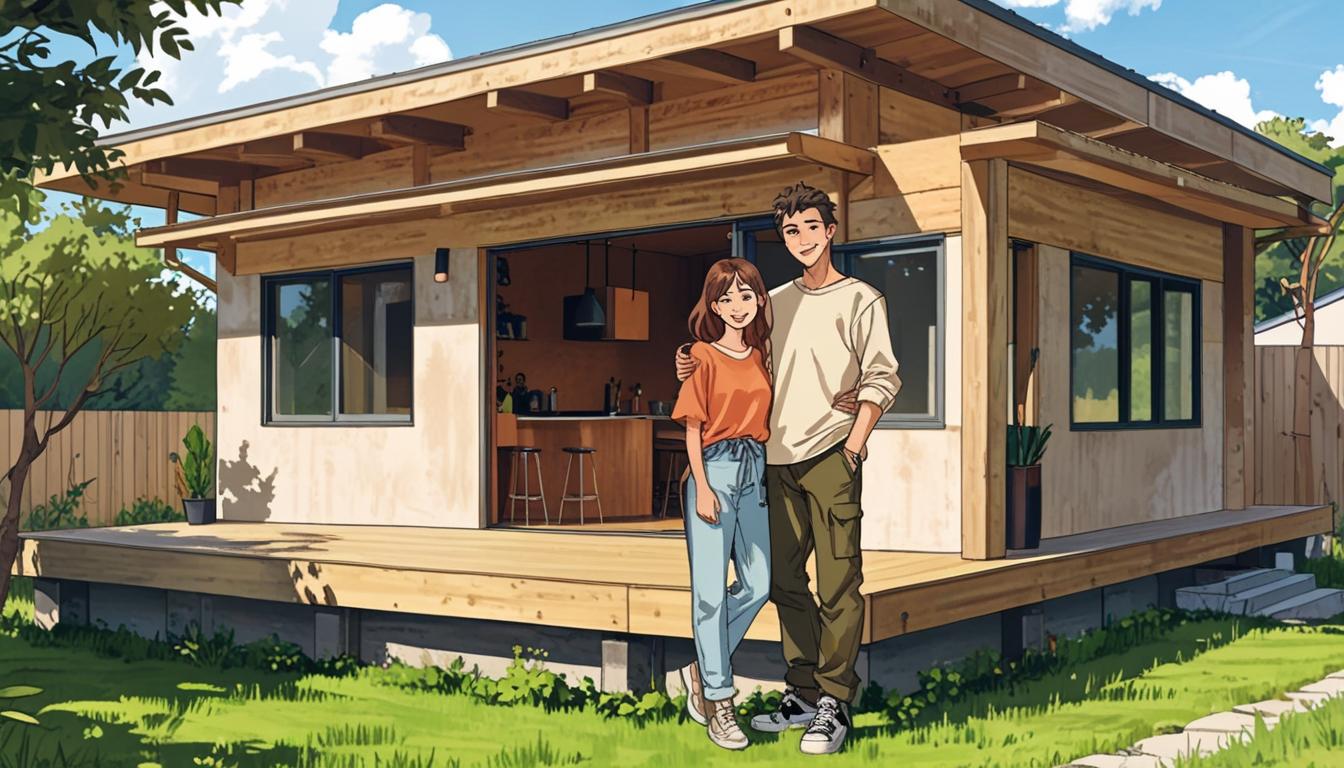Aalborg: Mette and Flemming Møller transition from their farm in Gunderup to a sustainable housing project in Tranders Høje. Their eco-friendly home utilises bio-based materials, reflecting a shift towards climate-conscious living and innovative residential development in Denmark. Insights from their experience will guide future projects.
Mette and Flemming Møller, a couple from North Jutland, recently transitioned from their longstanding farm in Gunderup to a novel housing project situated in the Tranders Høje district near Aalborg. They made this move on December 1, 2023, after selling their property of 23 years as part of a broader shift towards sustainable living options. Their new home, one of three constructed row houses, incorporates alternative construction materials aimed at reducing environmental impact.
The couple decided to engage with a real estate company eager to explore the potential of building more homes using these sustainable materials, should the Møllers’ experiences prove favourable. “We first fell for the area, but we are also very excited about the thoughts behind the construction,” Mette Møller mentioned, pointing to the innovative aspects of their new living environment.
The housing project in Tranders Høje reflects a shift in residential development, where pension funds and large urban developers increasingly utilise materials such as straw, hemp, lime, and clay. This marks an evolution in the perception of eco-friendly housing, with ordinary residents now opting for these modern, climate-conscious designs rather than the alternative lifestyles once associated with such materials.
Mette and Flemming Møller’s new home measures 95 square metres, featuring an open-plan living space that encompasses the kitchen and dining area, along with three bedrooms, a utility/storage room, and a bathroom. The couple is currently in the process of furnishing their home and is still settling into the rental accommodation. Early observations of their living environment have been positive, particularly regarding the indoor climate, which has exceeded their expectations.
Flemming Møller highlighted a commitment to sharing their experiences as the first residents of the straw house. “It is a very, very exciting project, and one can only applaud the use of sustainable building materials,” he stated. The couple has been personally involved in evaluating the advantages and disadvantages of the new housing, with an evaluation meeting scheduled for May 2024 to discuss their insights with the real estate company.
The project not only focuses on aesthetic value but also on enhancing community and active living within the area. Tranders Høje is positioned strategically near local amenities, such as Gigantium and public transport links that facilitate access to Aalborg city centre.
The construction of the straw houses is noteworthy for its unique use of bio-based materials in the building process. The walls are crafted from straw-based components and hemp blocks, encased with lime and clay plasters, while the roof is constructed using wood chips. This innovative approach has yielded a reported 60% reduction in carbon emissions compared to traditional building methods, as indicated by an analysis from Ecolab.
As part of an initiative led by the pension fund PKA and construction company A. Enggaard, the project is seen as a test case for a broader adoption of climate-friendly building materials in the future. “We have gained valuable insights into the qualities of bio-based materials,” Nikolaj Stampe, property director at PKA, stated. The development of these houses aims to meet modern building requirements while pushing the envelope for future sustainable constructions.
As the construction landscape evolves, the Møllers’ experience living in this pioneering home will contribute to valuable data that may inform subsequent projects. A. Enggaard’s department head Jakup Sjostein expressed a desire to further explore and expand upon the successes of the current design, envisioning potential enhancements through a “Straw House 2.0” initiative aimed at incorporating even more sustainable materials in future structures.
With upcoming climate regulations that will tighten CO2 emission standards every two years until 2029, the continuous experimentation and documentation of alternative building techniques will be essential in ensuring that this transition to more sustainable housing is both responsible and practical for today’s inhabitants.
Source: Noah Wire Services



